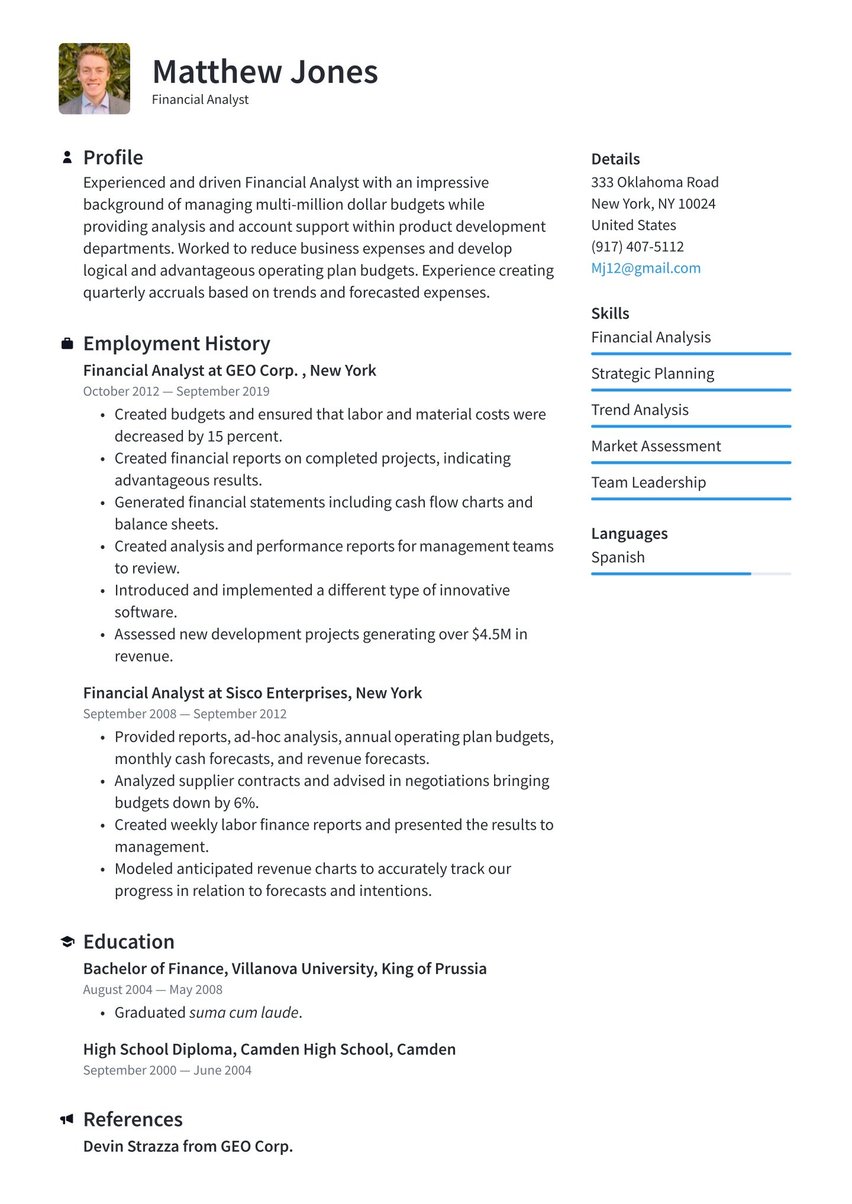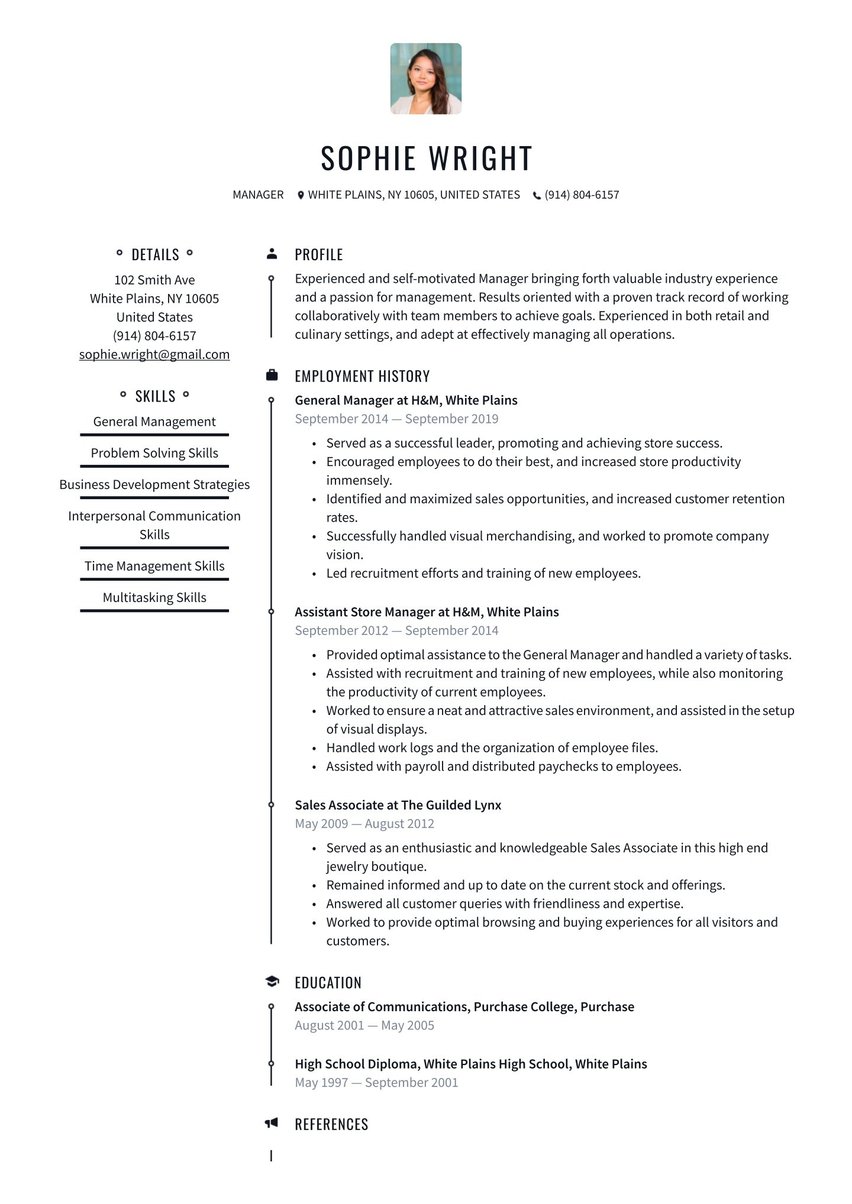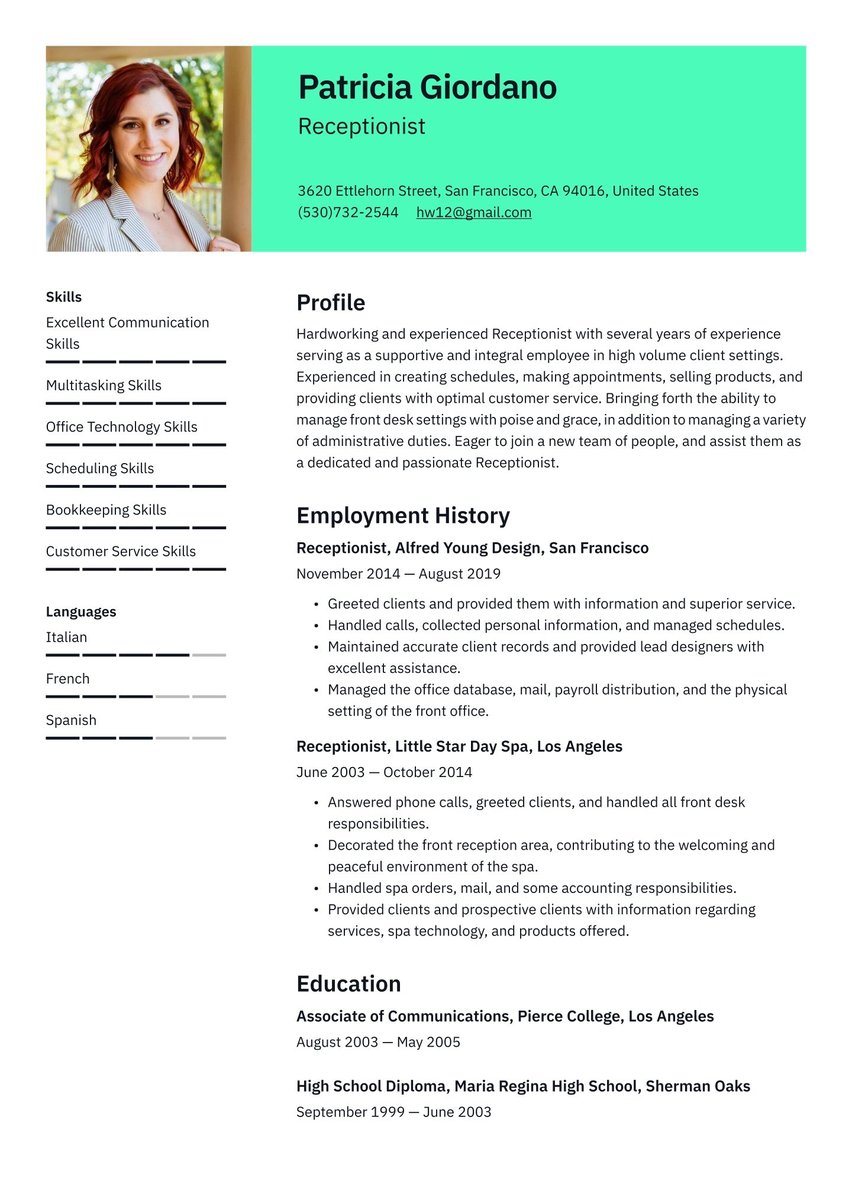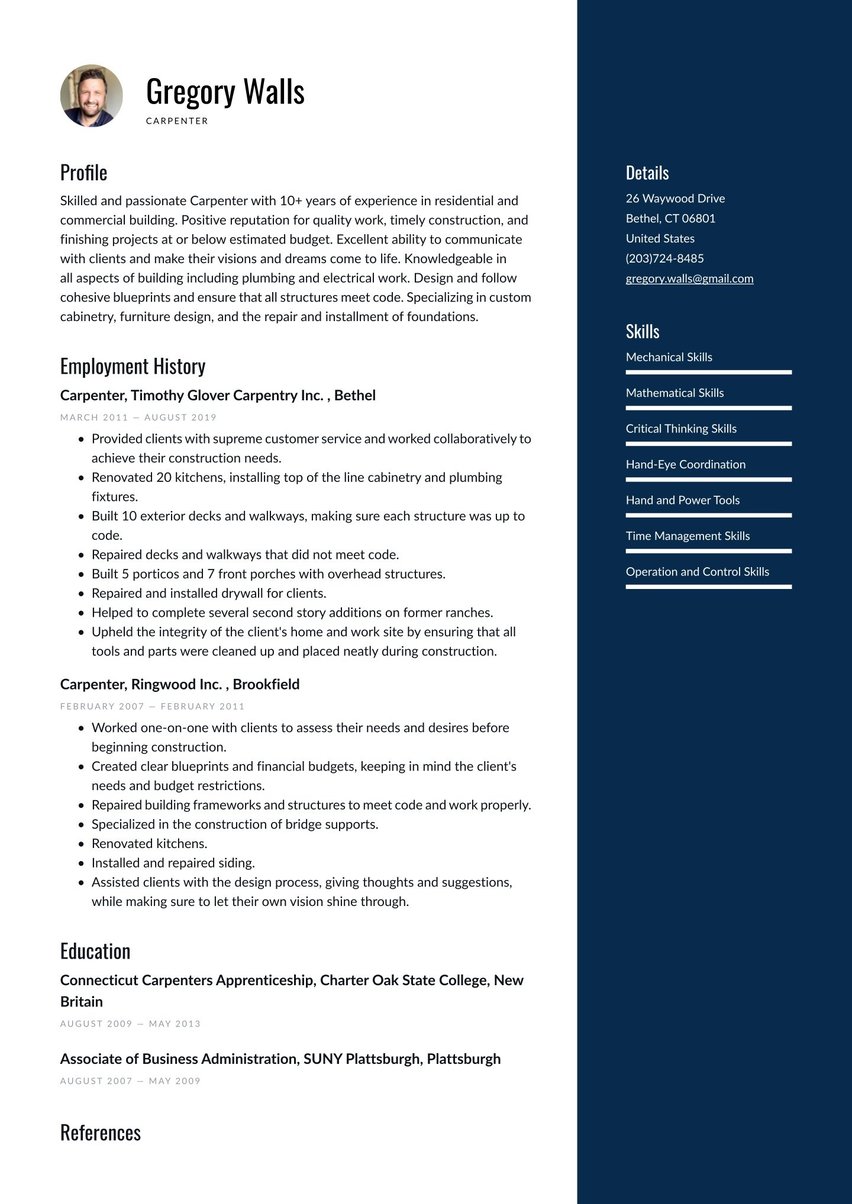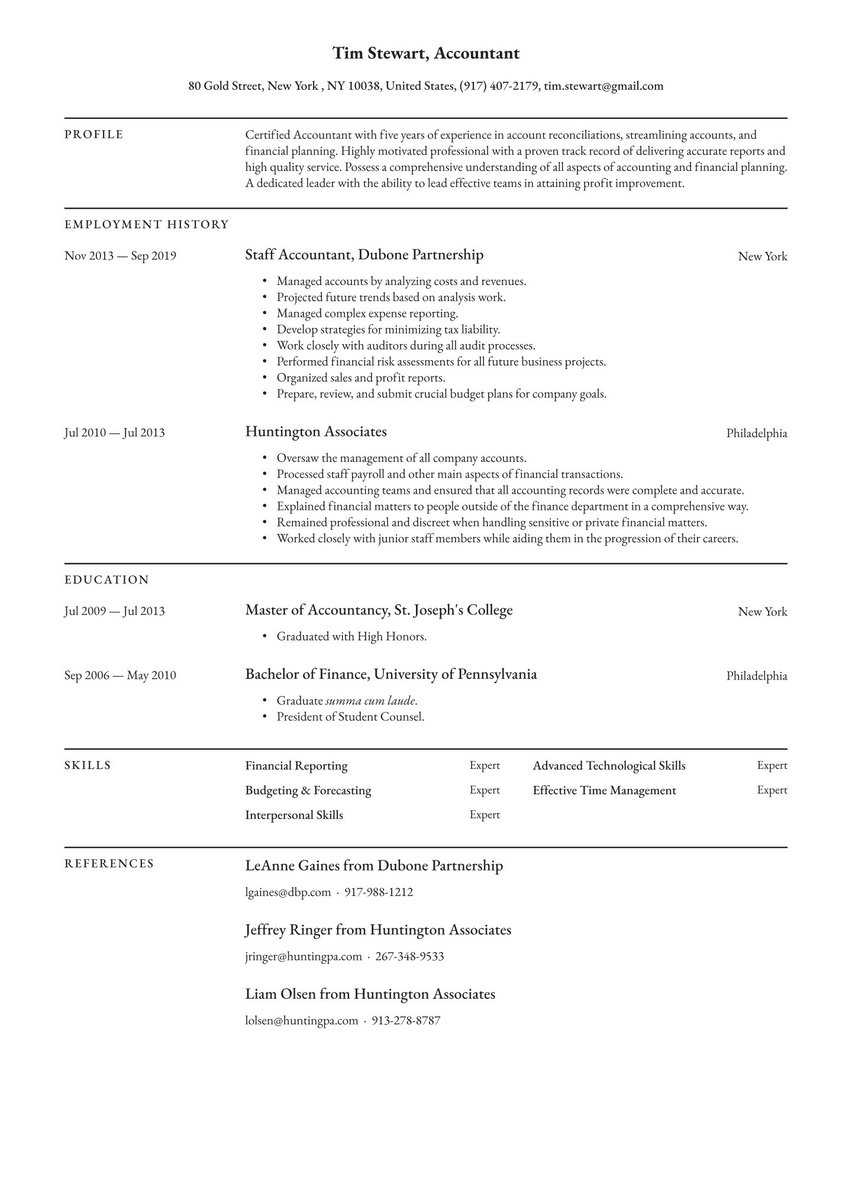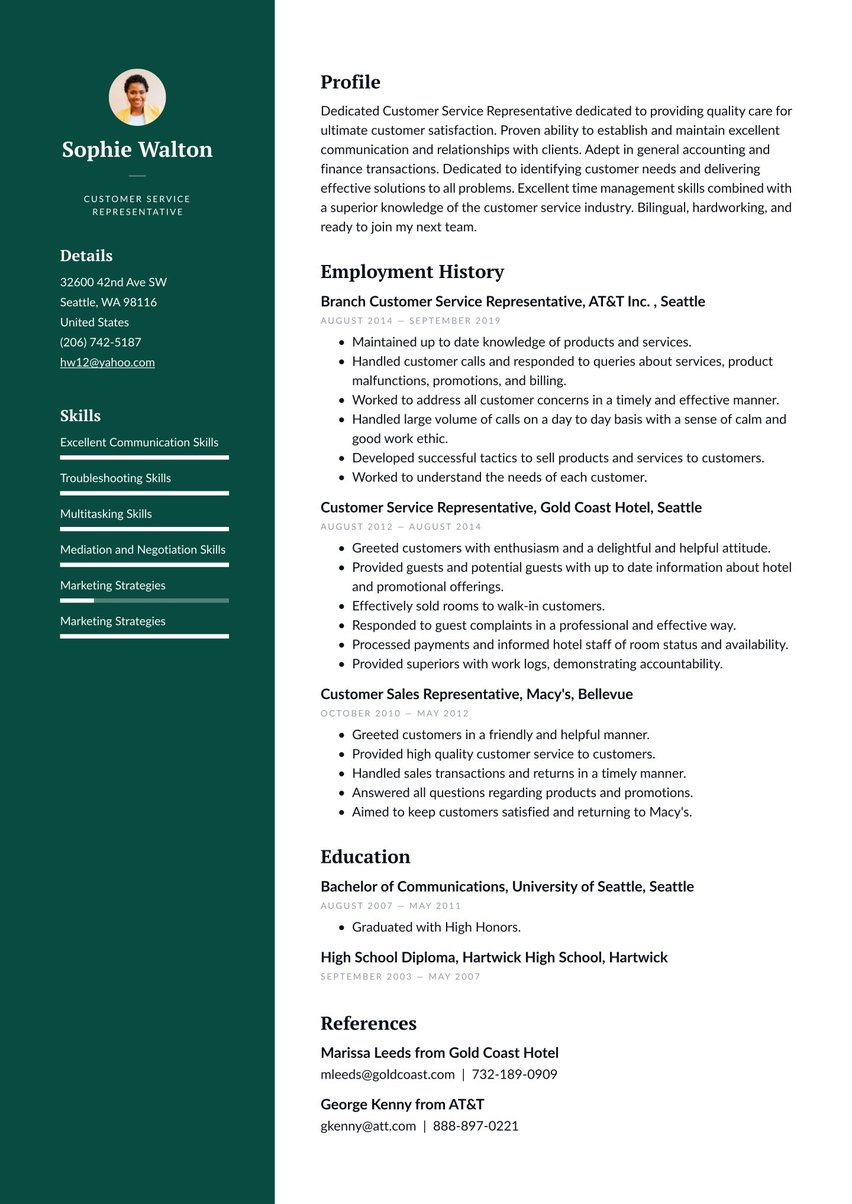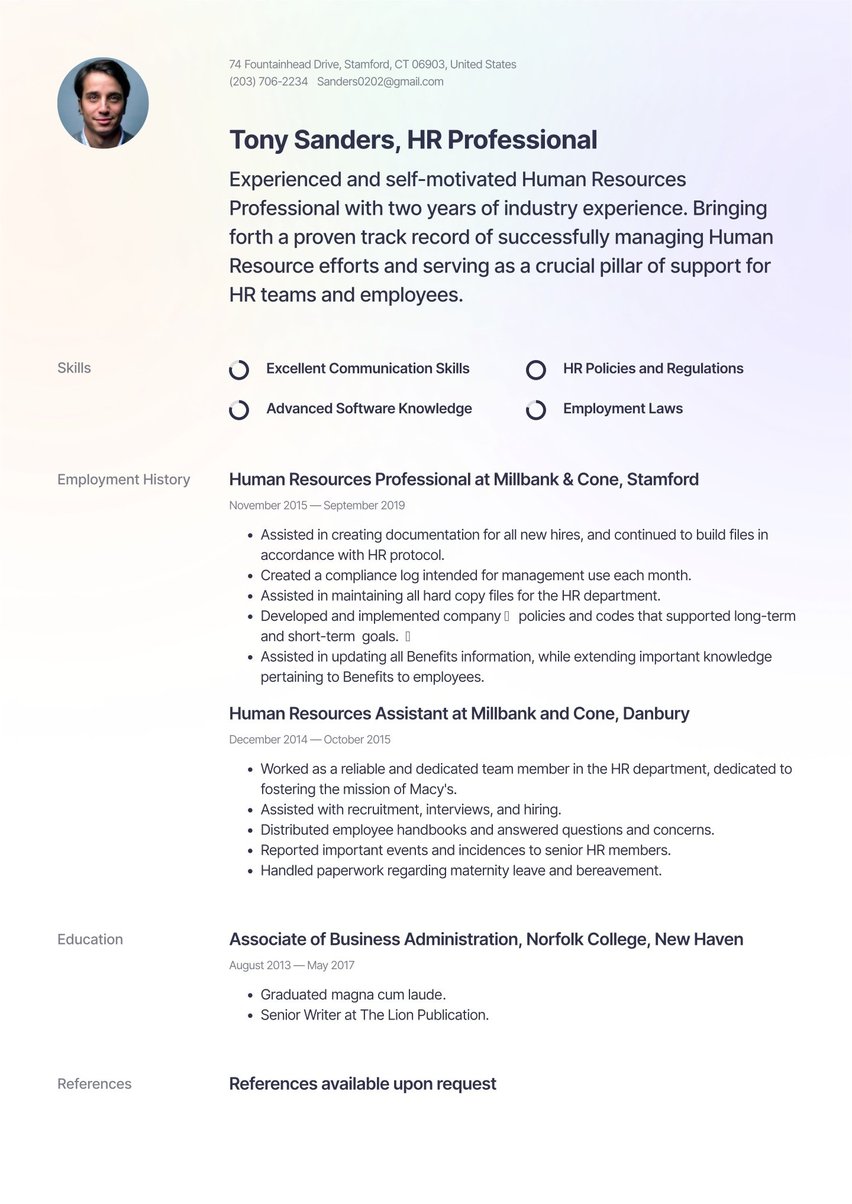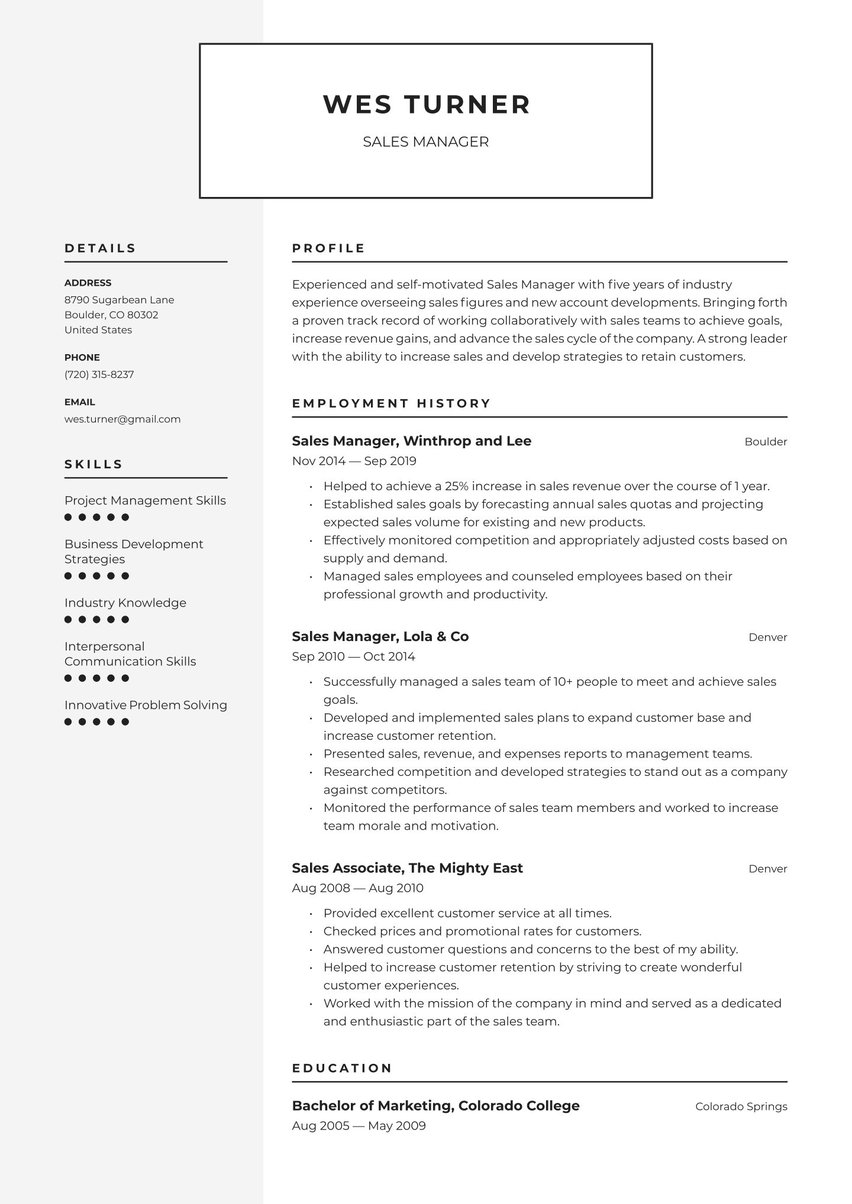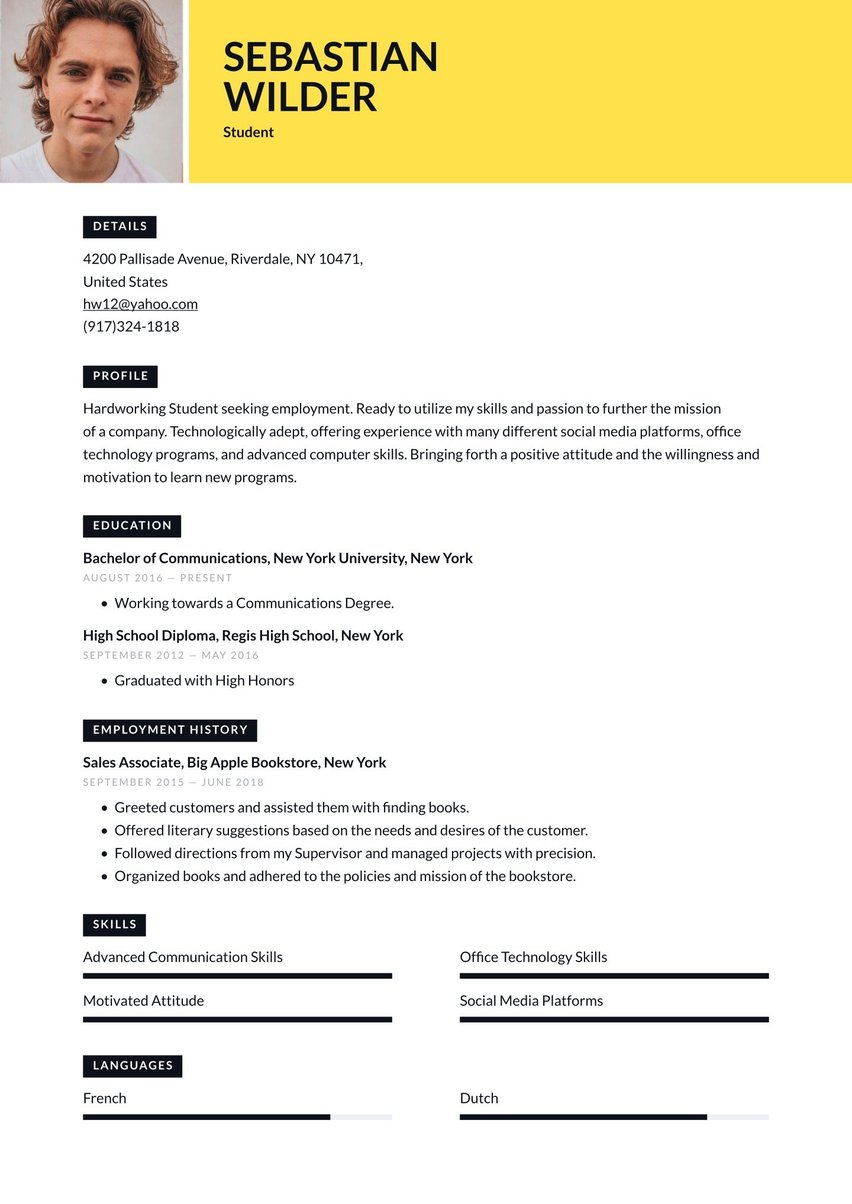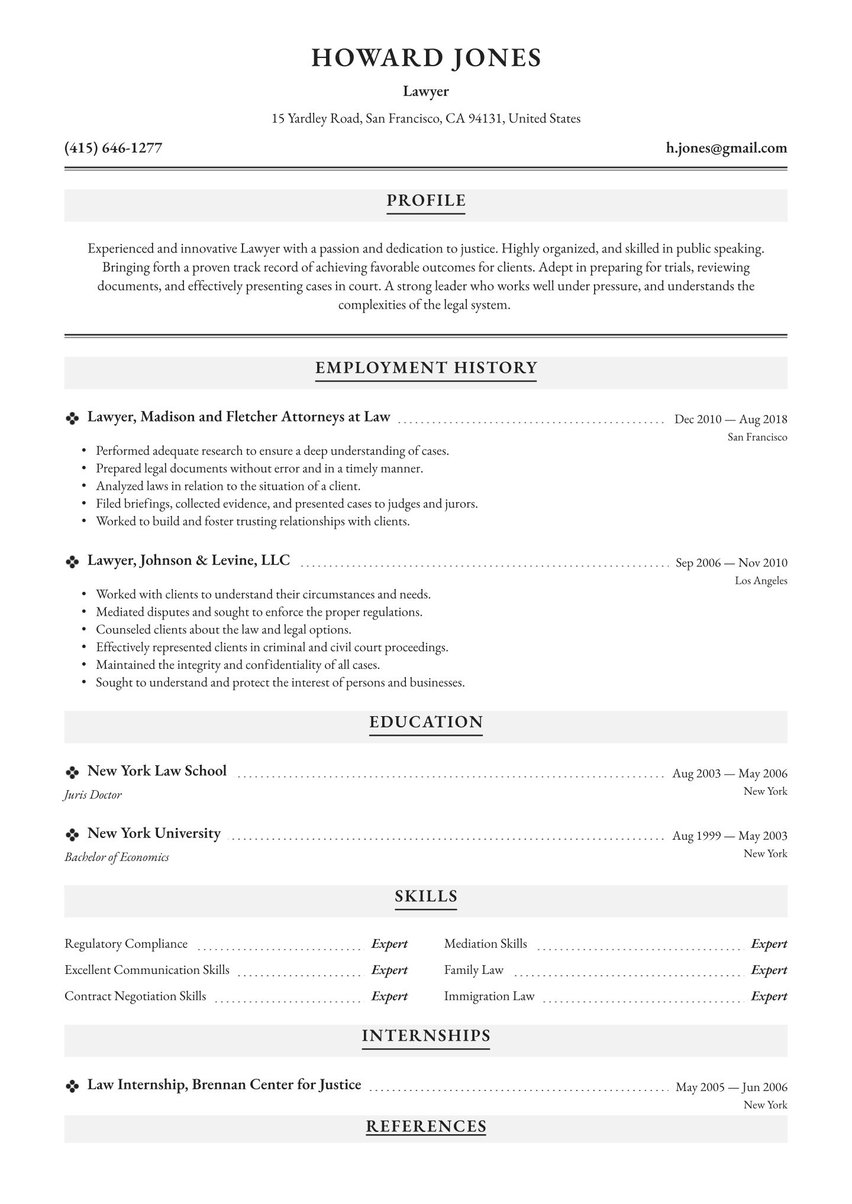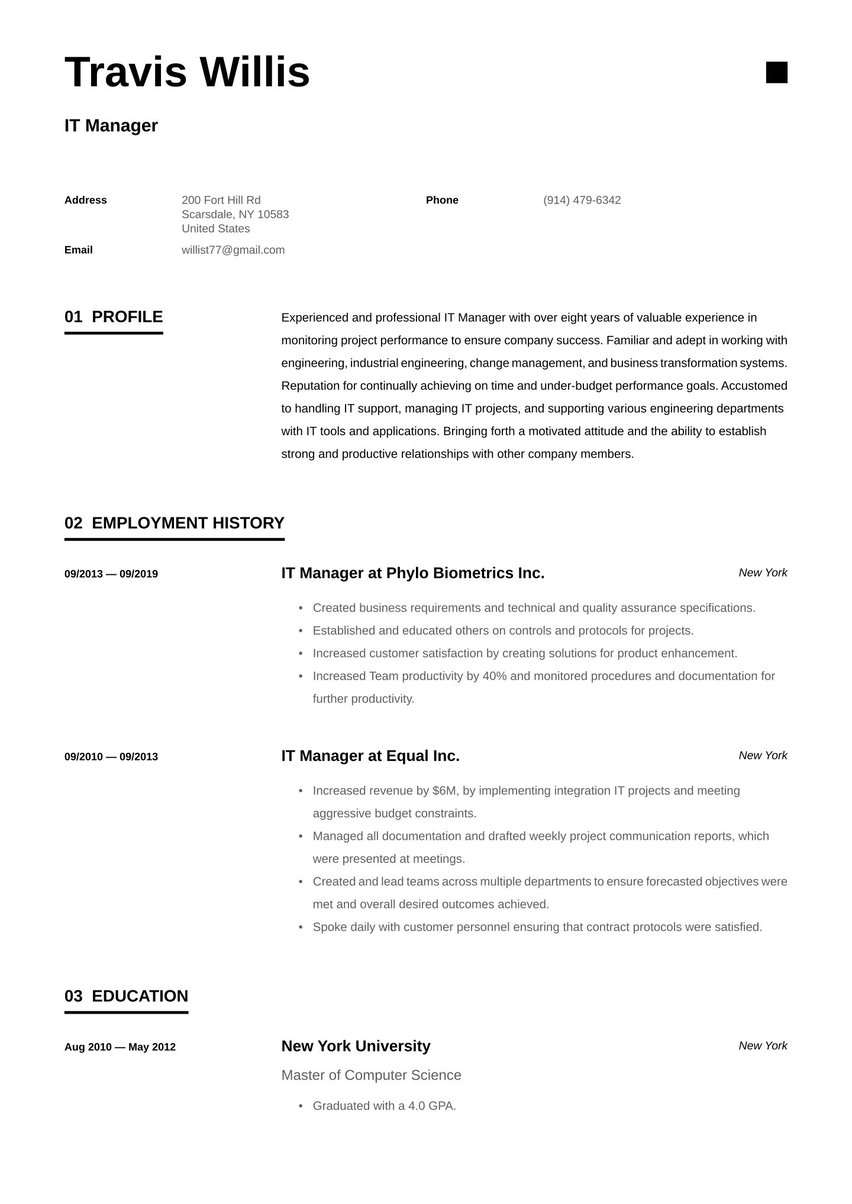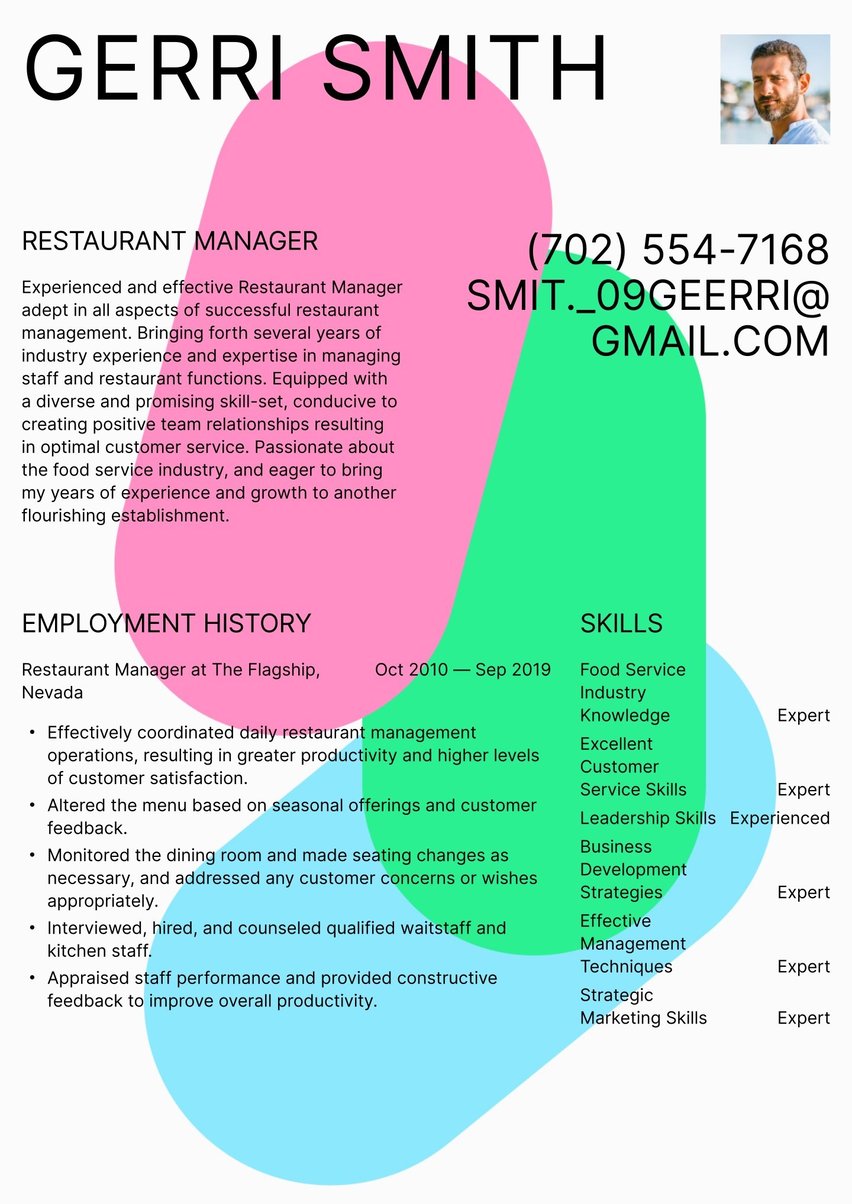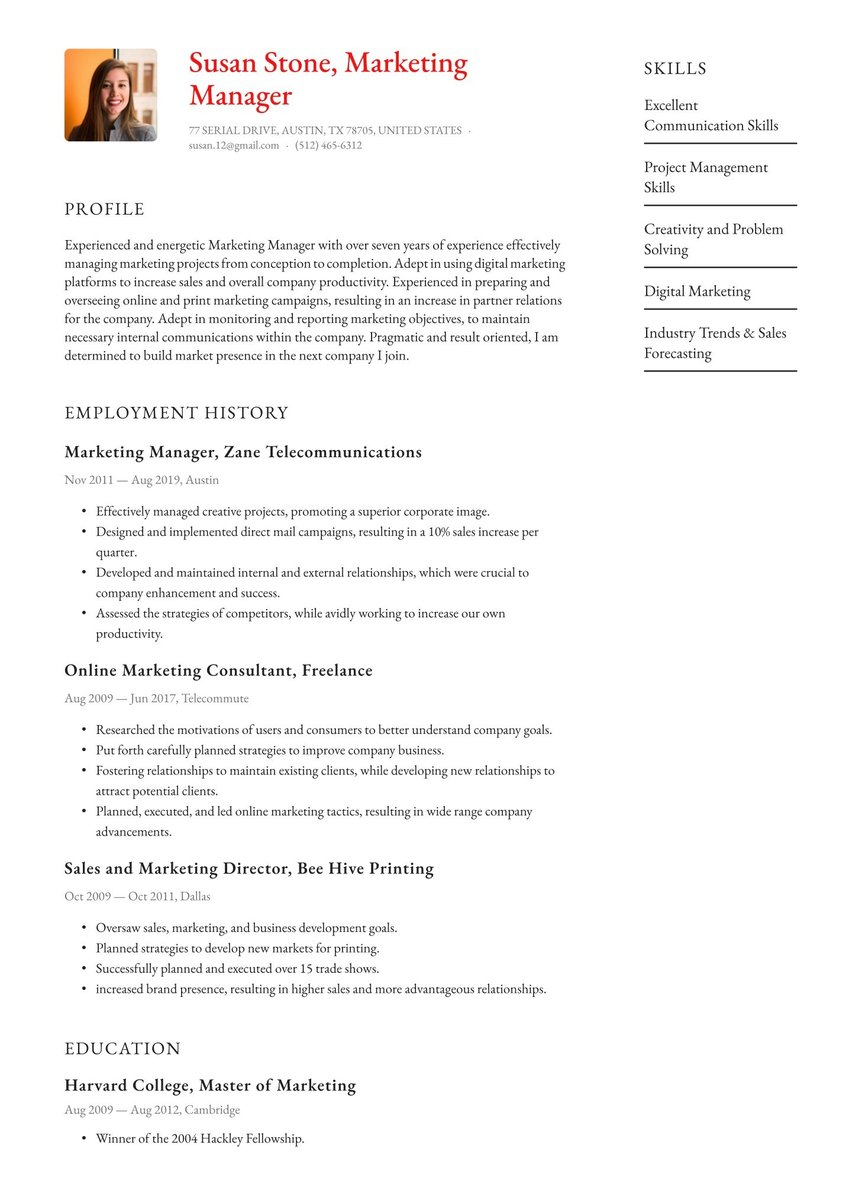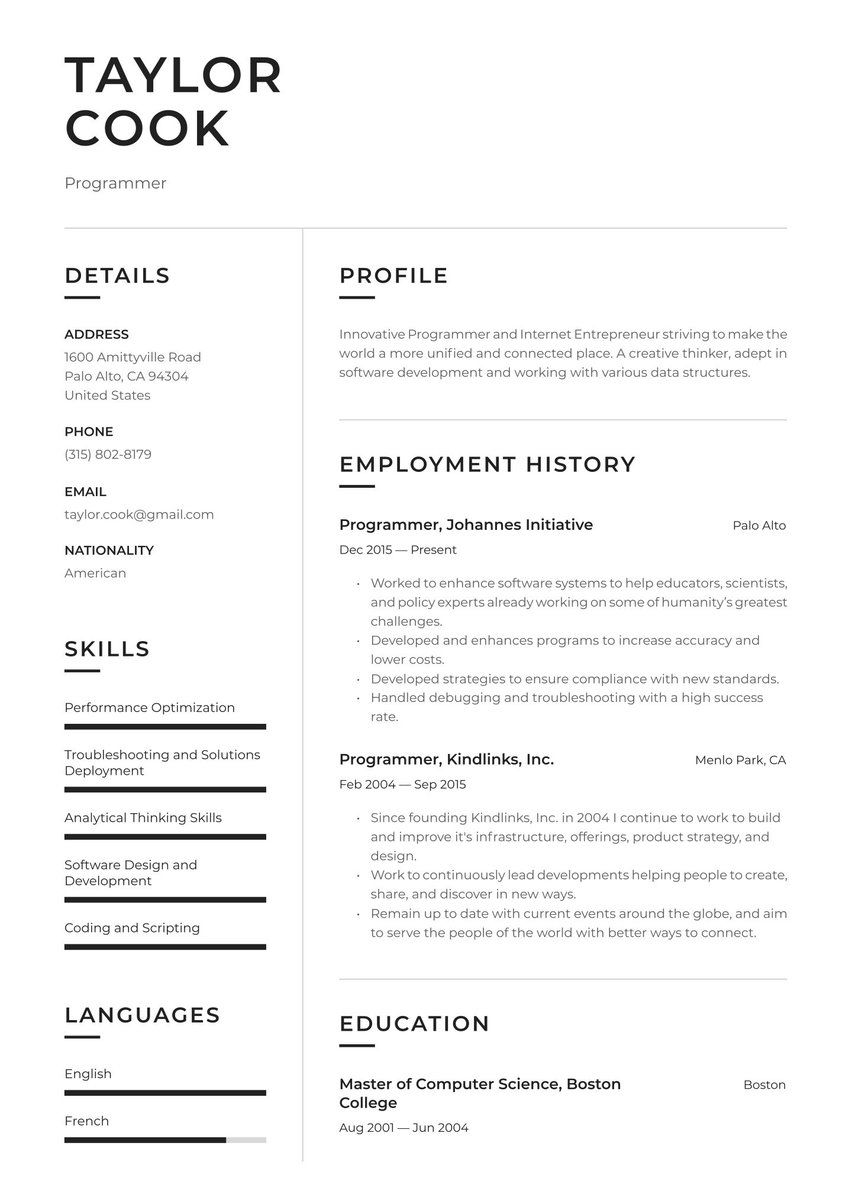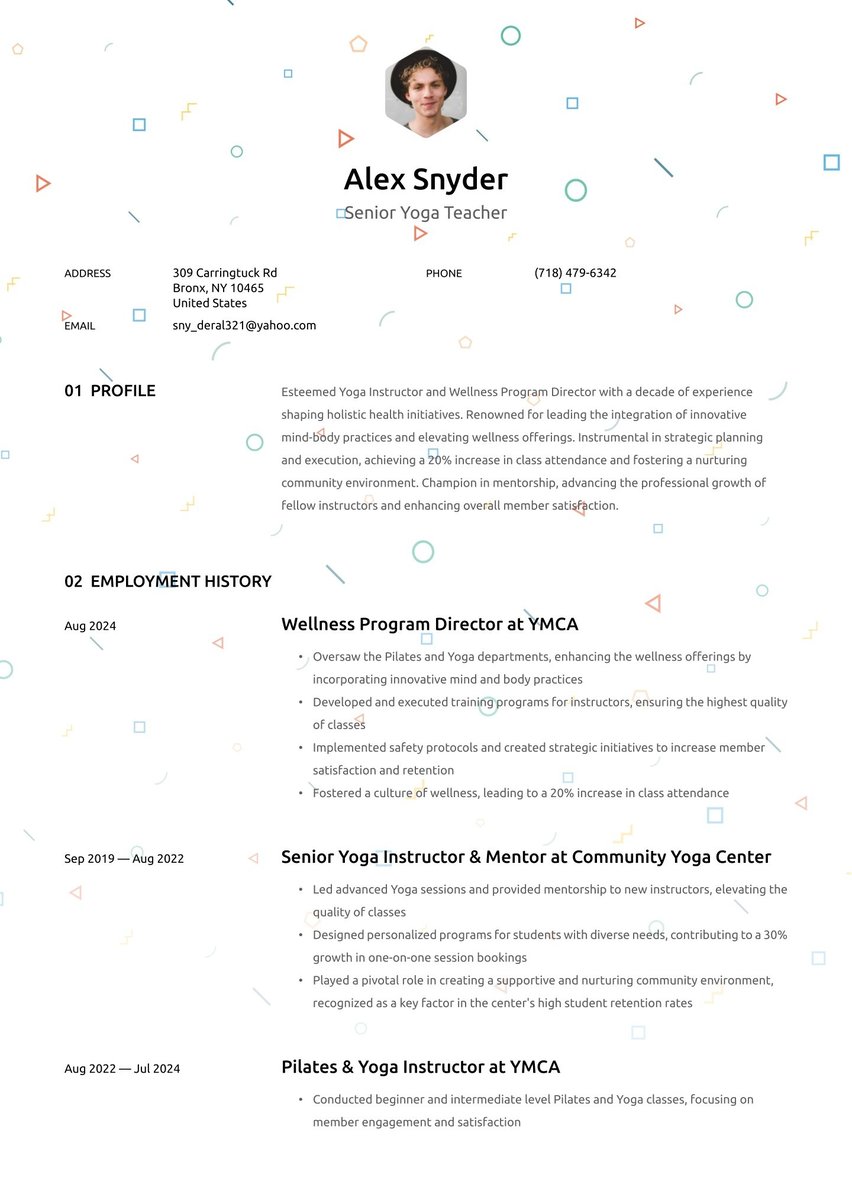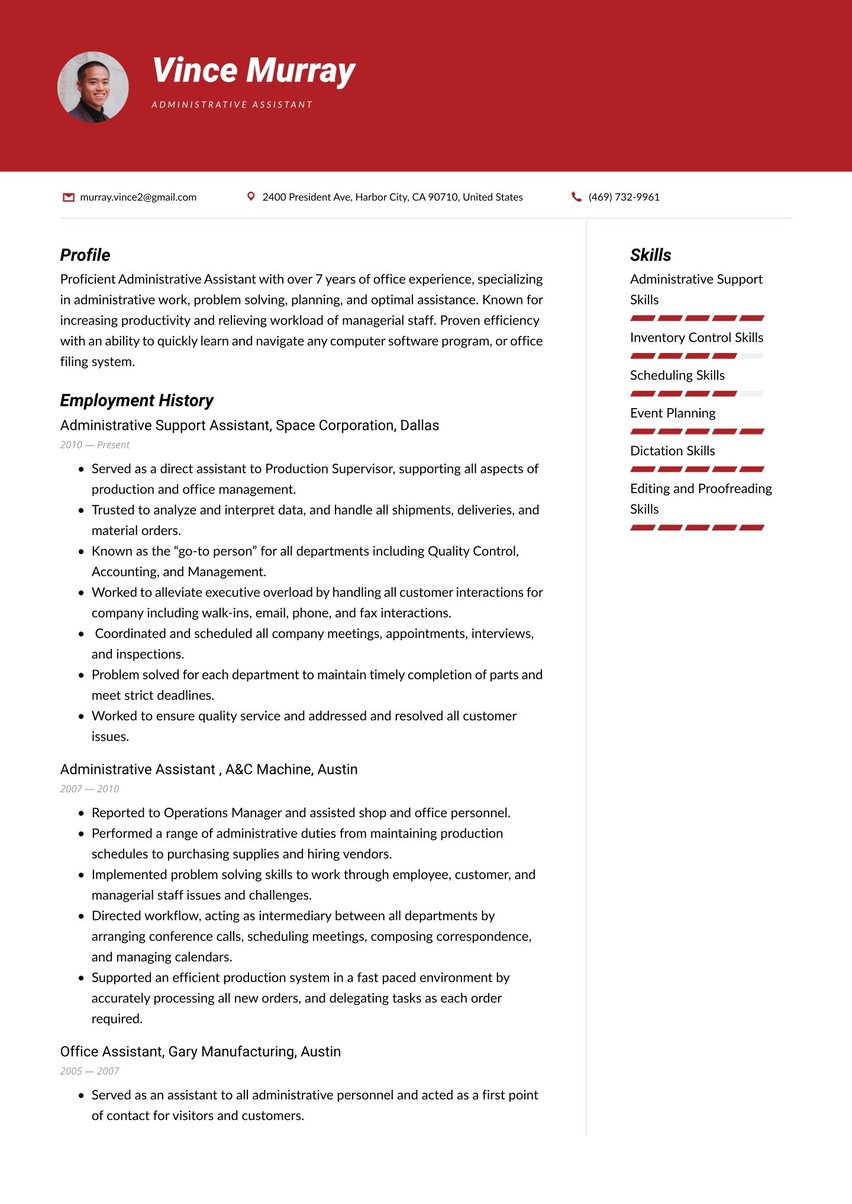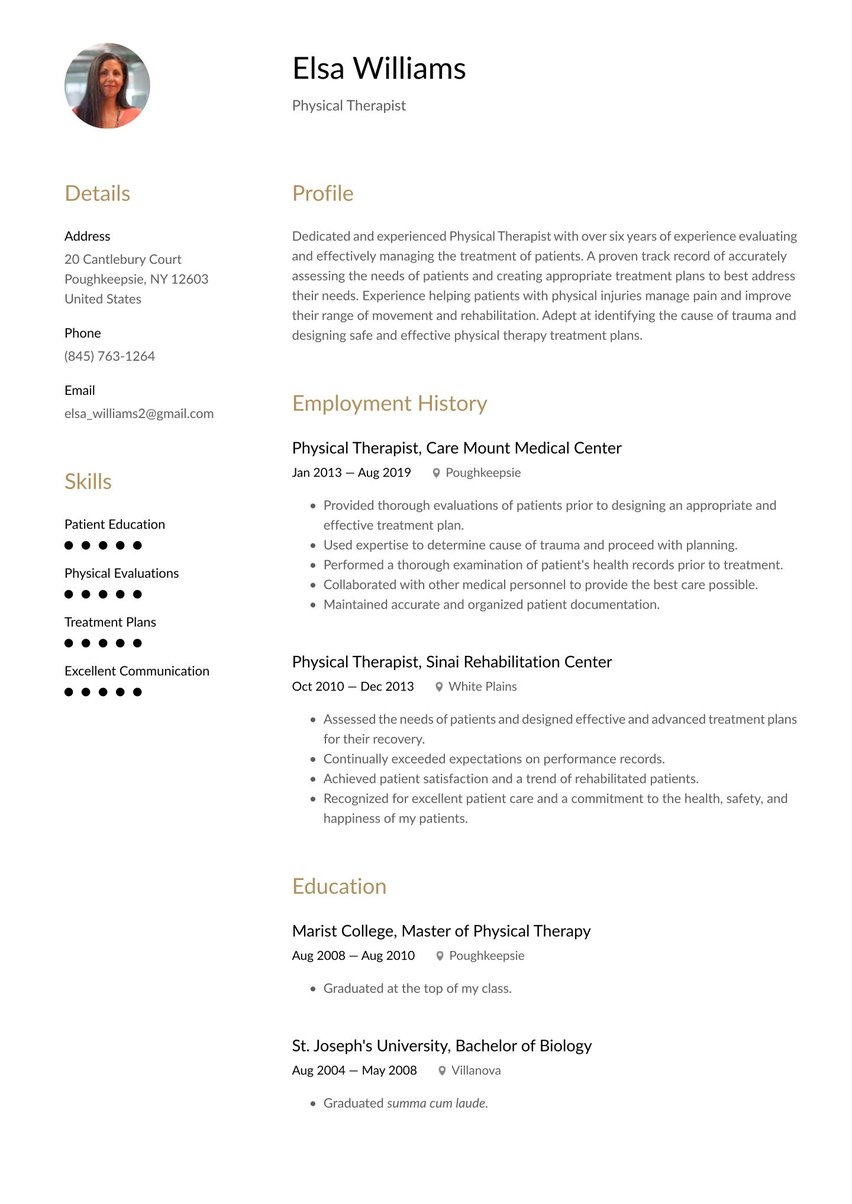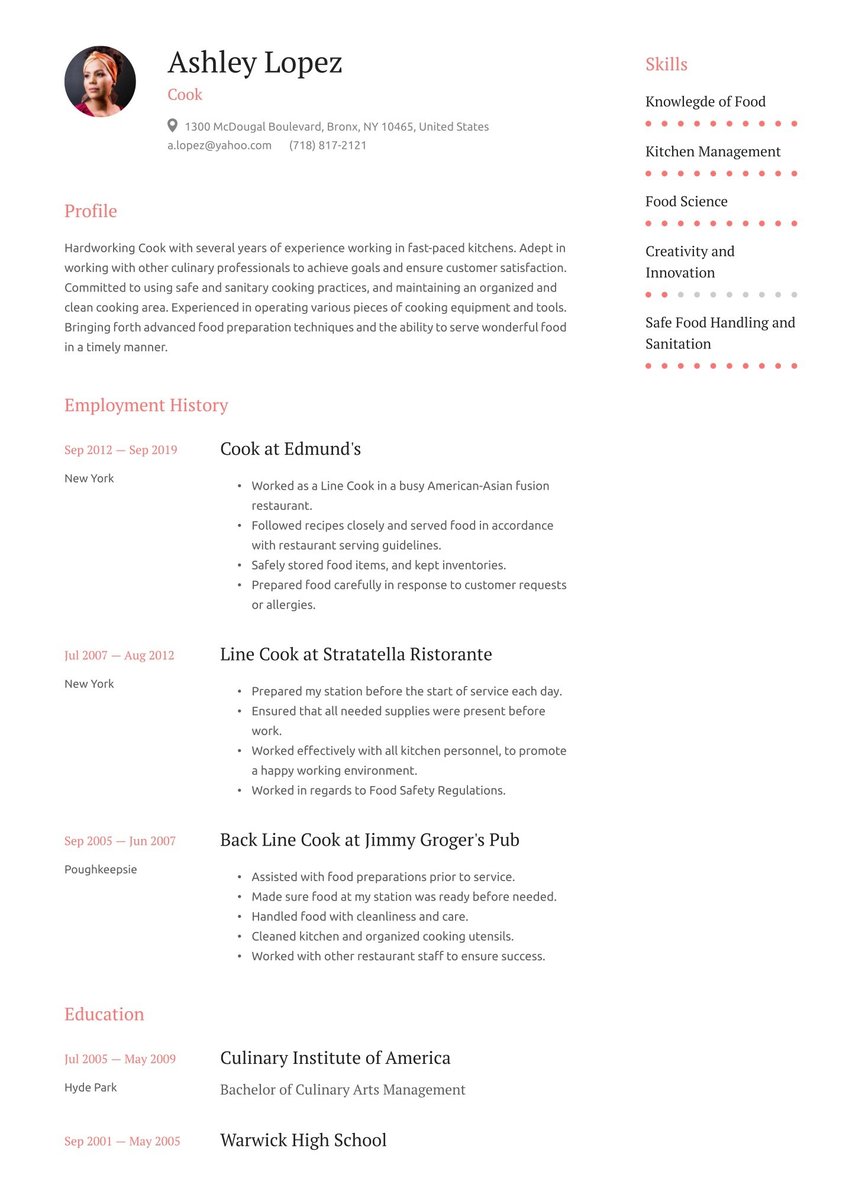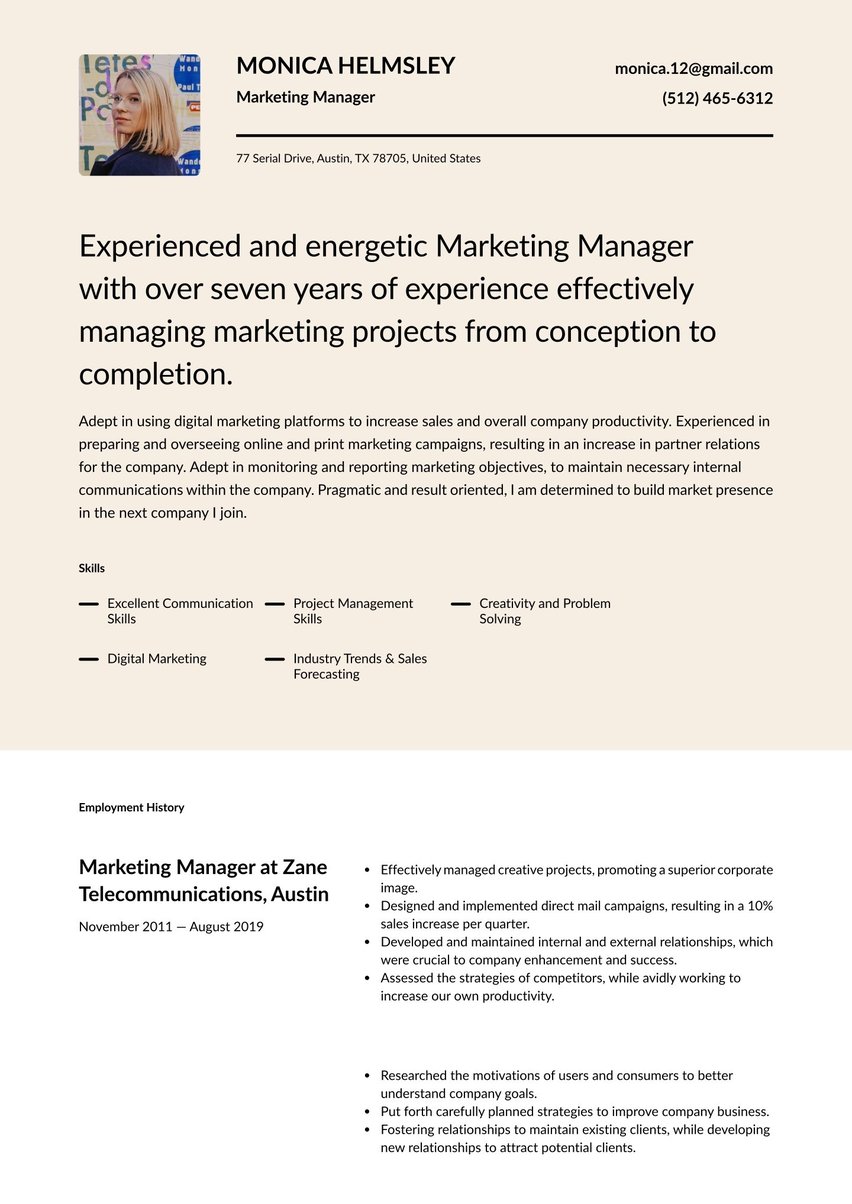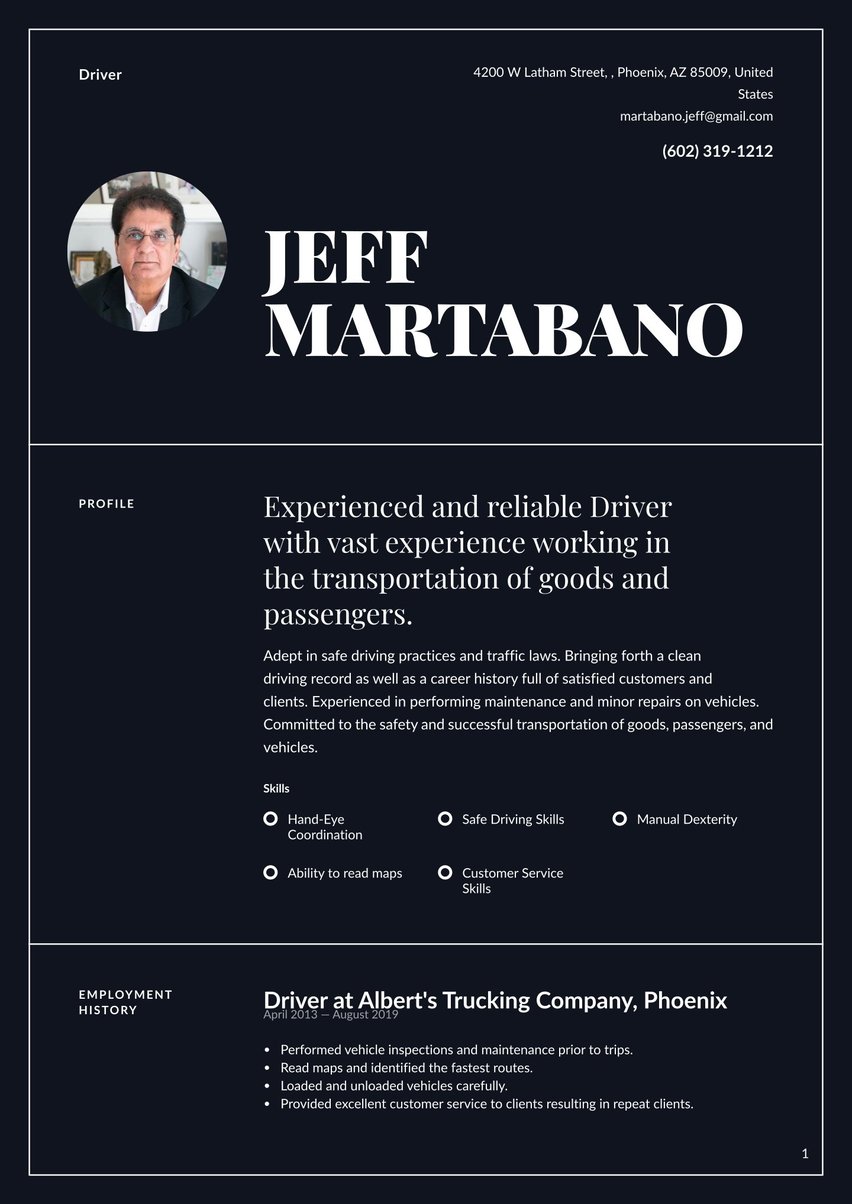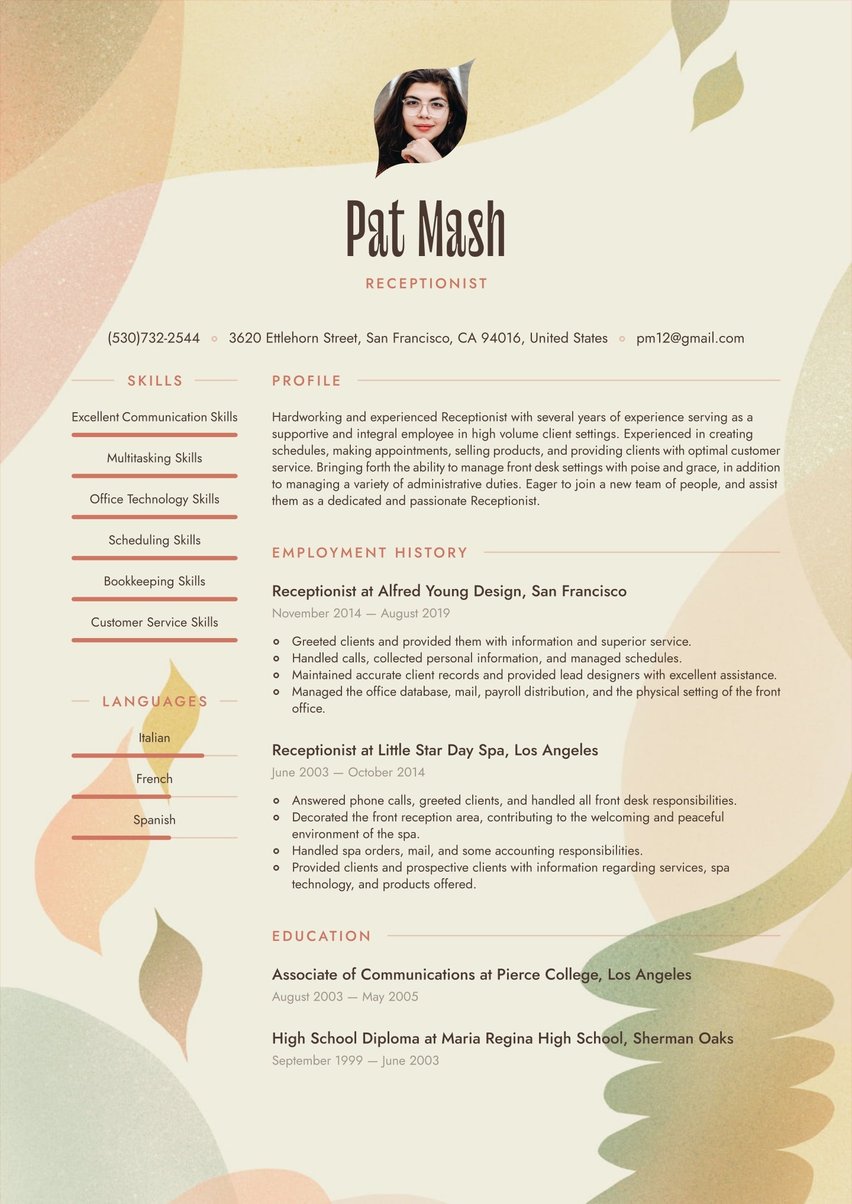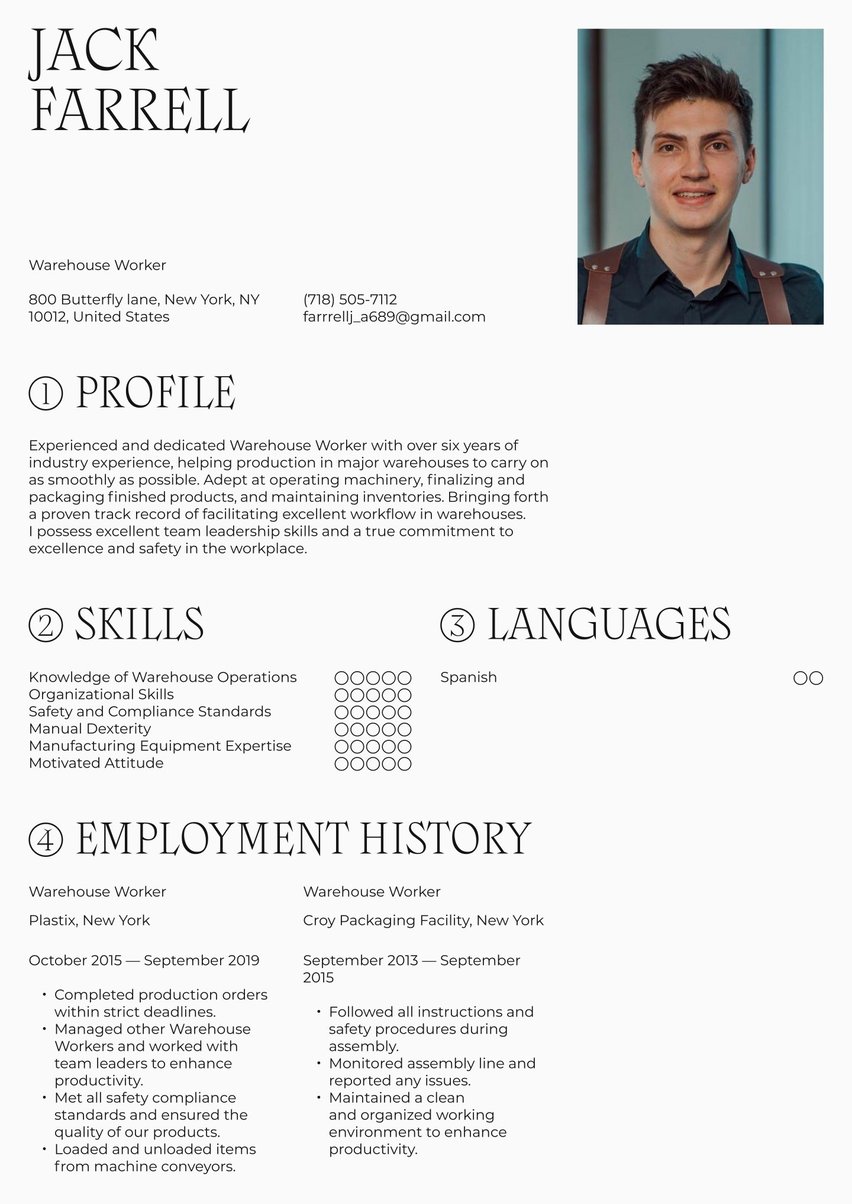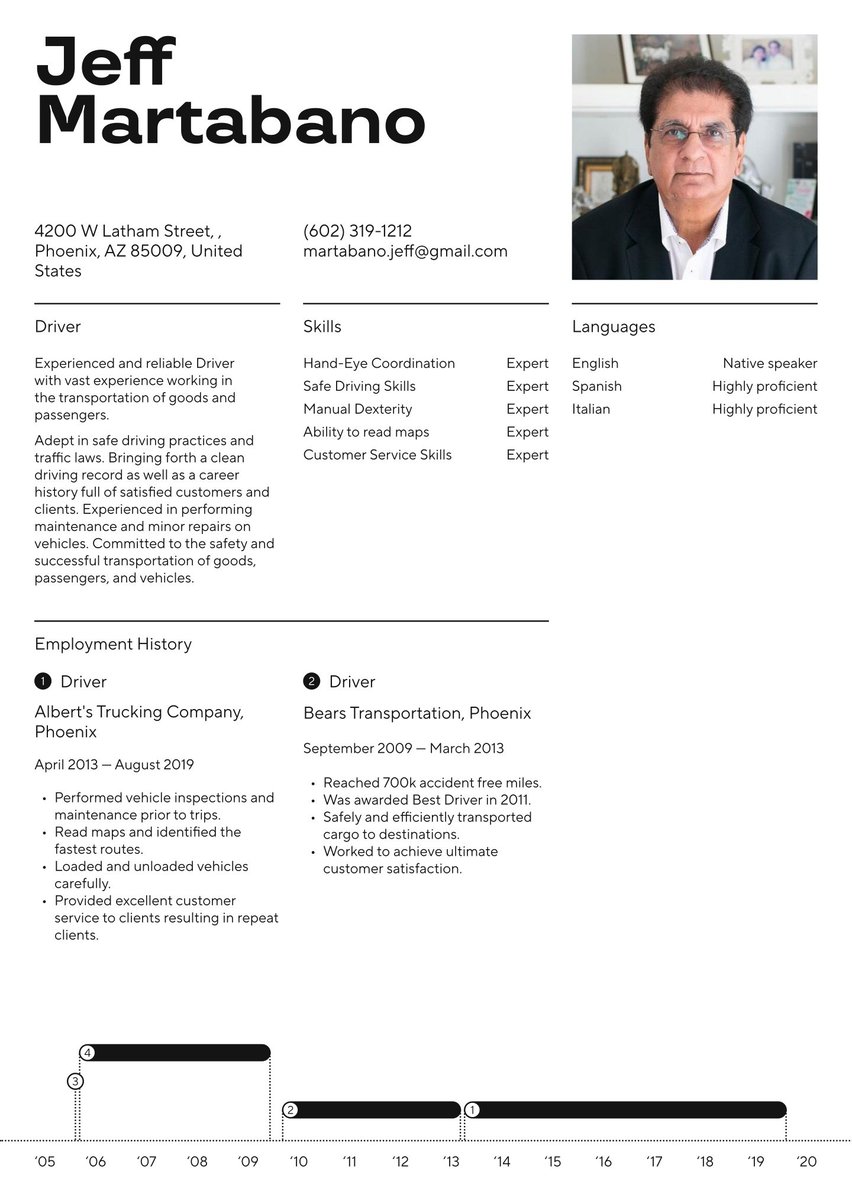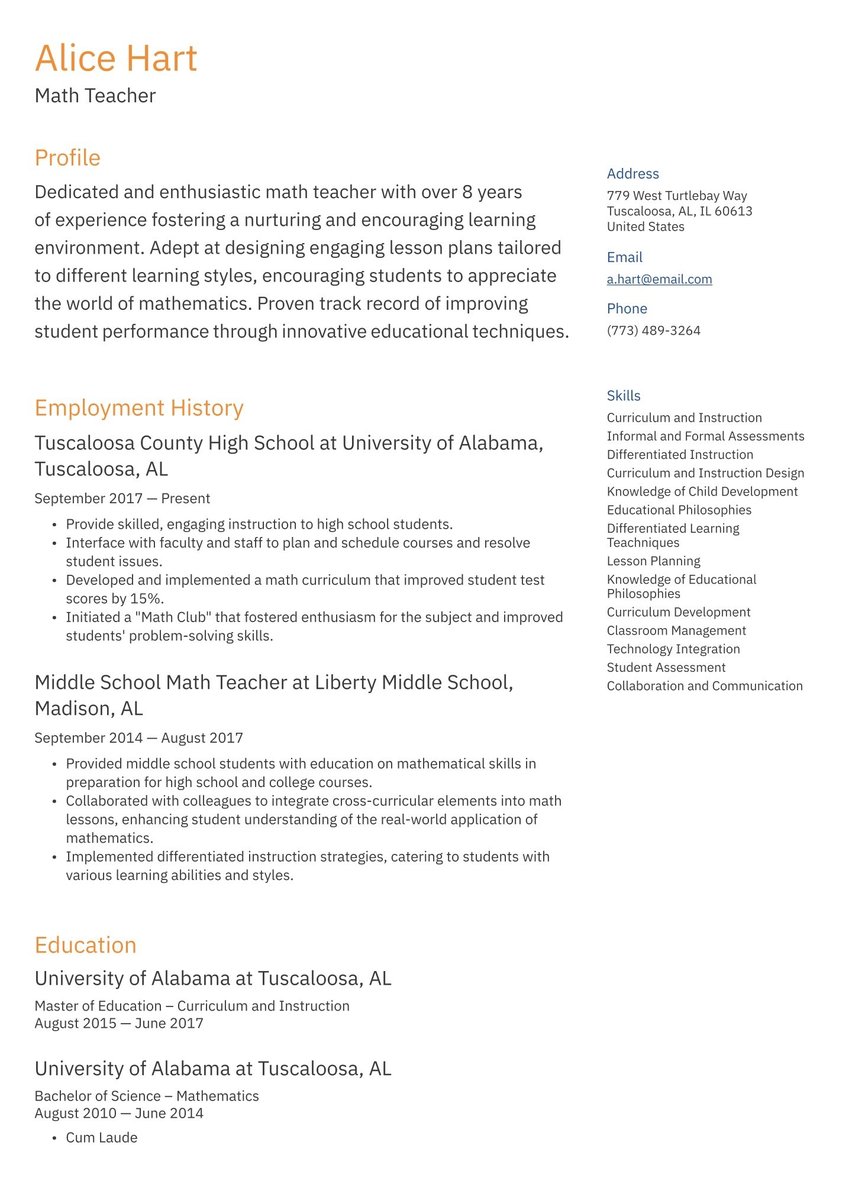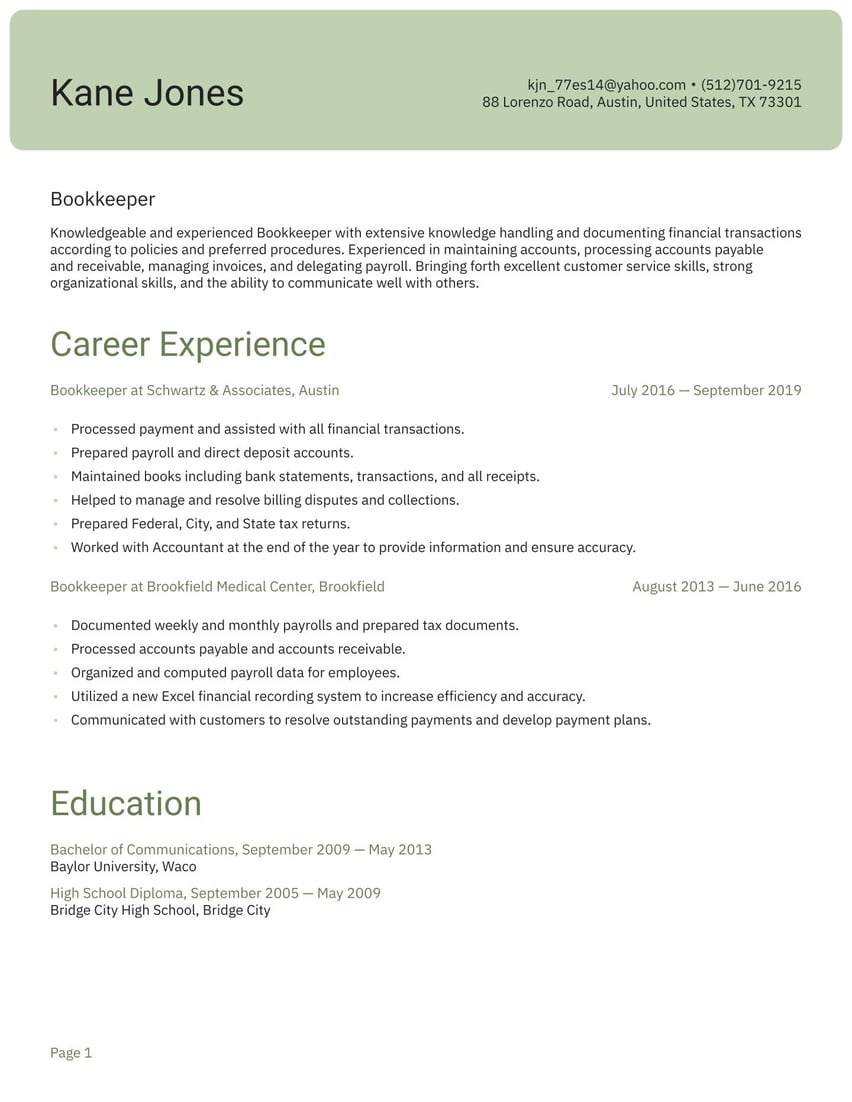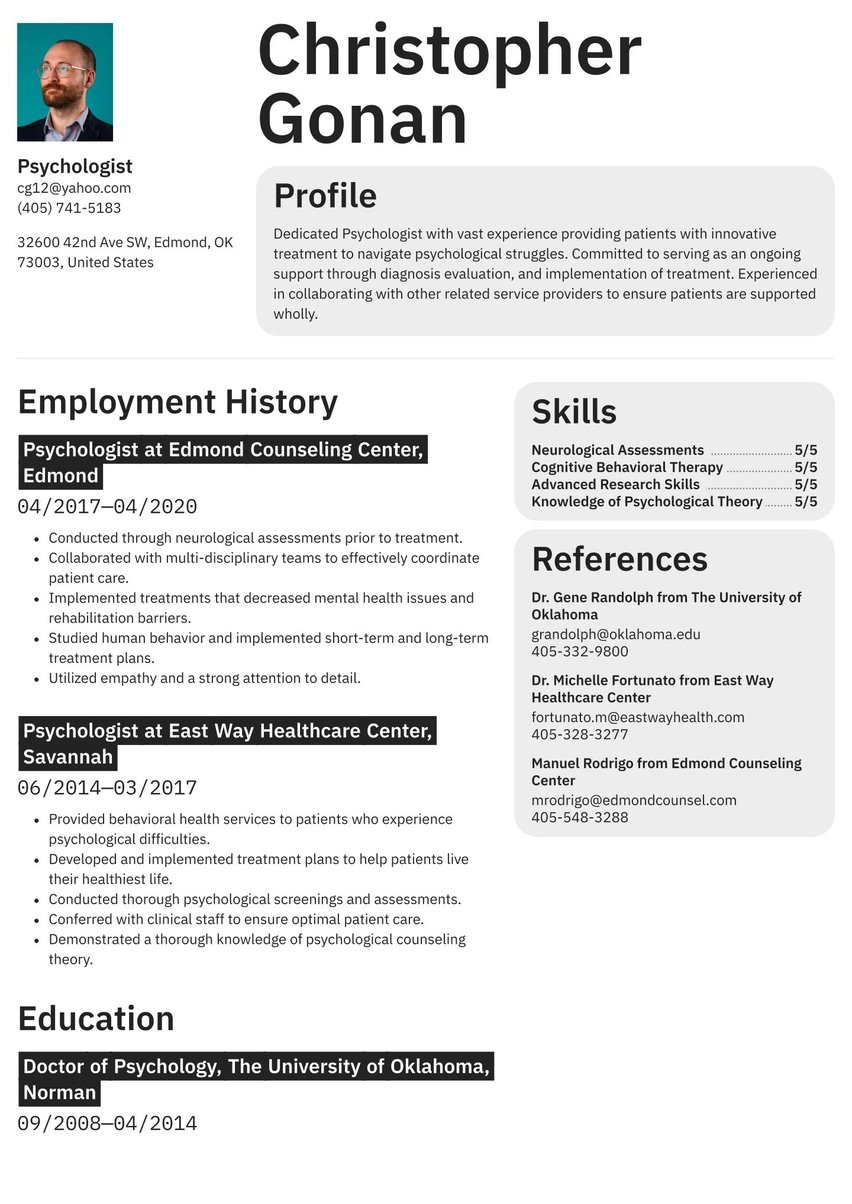A great maintenance and repair resume is like the on switch to your career advancement. Whether you need to freshen up your resume or build one from scratch, we’ve got the tools you need to light up your career.
Maintenance and repair resume examples by experience level
It all starts with Resume.io’s writing guides and resume examples for 300+ professions, backed up by an easy-to-use resume builder. We’ll help you construct an application that hammers home your strengths.
This resume guide, along with the corresponding maintenance and repair resume example will cover the following topics:
- What does a maintenance and repair professional do?
- How to write a maintenance and repair resume (tips and tricks)
- The best format for a maintenance and repair resume
- Advice on each section of your resume (summary, work history, education, skills)
- Professional resume layout and design hints.
Maintenance and repair work spans a lot of occupations, so you want to check out our job-specific resume examples including our maintenance worker resume sample, handyman resume sample, electrician resume example or even the plumber resume example, or carpenter resume example.
What does a maintenance and repair professional do?
True to the name, maintenance and repair professionals maintain and repair machinery, electrical or plumbing systems, or any part of a structure or its interior that can break down or needs upkeep.
Maintenance work is upkeep done on a daily, weekly, monthly or yearly basis. Repair work occurs when something breaks down.
Types of maintenance and repair work
| plumbing | electrical | heating and cooling (HVAC) |
| heavy machinery | welding | carpentry |
| refrigeration | flooring | general handyman |
Some maintenance and repair workers are employed full-time by apartment complexes and businesses that own buildings. Others work for contractors who take on different jobs. Still others own their own business and are on-call when repairs are necessary.
Maintenance and repair job market and outlook
The need for maintenance and repair work will never go away as our world is full of mechanisms that break down with or without care, but an ebb and flow exists depending on the age of workers, the demand for new construction and movement of people from one residence to another and the general level of the economy.
Overall, the number of maintenance and repair jobs is expected to grow 4% by 2029, the U.S. Bureau of Labor Statistics predicts. If you’re a plumber or HVAC specialist, your profession should grow at exactly that rate. Carpenters will have less luck, as the demand for their work is predicted to stay flat. Electricians, however, will see the light, with expected growth of 8% and, correspondingly, they also earn the highest median salary at $56,900 a year. Plumbers come in second at $56,330; followed by HVAC workers, 50,590; and carpenters earn $49,520.
Almost a quarter (22%) of maintenance and repair professionals work in the real estate and rental and leasing business. Manufacturing accounts for 13% of jobs and government positions another 12%. Educational services and healthcare and social assistance organizations each account for 8% of maintenance and repair jobs, according to the BLS.
How to write a maintenance and repair resume
Before you get started with compiling your maintenance and repair resume, you need to understand what goes into it. Your CV should contain the following elements:
- The resume header
- The resume summary (aka profile or personal statement)
- The employment history section
- The resume skills section
- The education section
In addition to these key components, your resume needs to have a consistent tone and strong message. Just as you adjust the materials and style you use to do repairs based on the existing structure, you must adjust the wording and style of your resume to address the needs and culture of your prospective employer.
Conduct some research into the working style and the employees at the firm. Find out the name of the hiring manager or the person who would be your boss. That way you can speak directly to them in a language they feel comfortable with. If you have a connection to the business, make sure you add that to your resume. It could give you the lever you need to grab that interview!
Like a well-oiled machine, a powerful resume will have your job search running smoothly. Follow these guidelines:
- Choose your words carefully to address each employer’s needs.
- Make a great first visual impression with a resume template and design that shows off your professionalism.
- If you are applying online, target each job with keywords and phrases from the listing to help you pass through the ATS screening software.
How to beat the ATS
You want your resume in the hands of a human being. If you apply online, to get there, you have to make it past the Applicant Tracking System. This software uses formulas to rank resumes based on the job listing. Here are some steps to take to avoid being filtered out:
- Analyze the job listing
- Highlight skills and attributes your prospective employer seeks
- Check them against your resume
- Add any that describe you but are not already in your document
Make sure you use the exact language from the job listing, but do so in a natural manner. Don’t stuff your resume (recruiters and hiring managers won’t fall for that trick) and make sure you spell out and use abbreviations just in case.
The best resume format for maintenance and repair
Your resume format also plays a role in beating the ATS. The preferred structure of any resume is reverse chronological order, in which you start with your most recent position and work backward to your earliest work (within the past 10 years).
The hybrid resume format, which begins with a Skills or Experience section followed by a shorter Employment History section, may be of use to you if you are new to the workforce, are a more mature worker or are changing careers. Avoid the functional resume format unless you are a technical professional or specialist since it emphasizes niche or complex skills over work history.
Recruiters and hiring managers (and the ATS) prefer reverse chronological order, so we recommend it as your best bet.
Resume summary example: on the level
The summary may be the toughest section of your maintenance and repair resume to craft, but it is well worth the effort. The bulk of your resume consists of bullet items and listings, but here you can hammer home your qualifications and put a spotlight on your personality.
Your profile is also known as a summary but really it is much more than a summing up of your career to date. The goal here is to convincingly answer the question: Why should I hire you? It is in these 3-5 sentences that you tout your biggest professional achievements and describe your work style. You should also explain your approach to repair work.
Be as specific as possible when you describe your accomplishments. Use data or recount a success with one difficult customer or repair job in detail.
Think about your dream job and write a profile that focuses on the accomplishments and personality traits that are most desired for that job. Recruiters want candidates who understand what will be required of them in their new position, so make sure you communicate that you know the job and have already achieved success doing similar work.
You can find a resume example for your summary section below.
Experienced Maintenance Manager with a proven track record of providing exceptional leadership and direction of maintenance programs. Adept in setting priorities and coordinating repairs, installations, projects, and preventative maintenance.
Employment history resume sample: your career heats up
You may think you’ve come to the easy part of your resume. All you have to do here is write a bullet-point list of the responsibilities you’ve had at each job, right? Wrong! For a perfect resume, you need to craft a story of success and professional growth.
So where do you start? Detail the skills you honed in each position and decide whether you have data or details you can use to illustrate those skills. Use strong action verbs to illustrate that you are a go-getter. Each item should add to the case you are making to hiring managers that you are a great maintenance and repair worker!
- Use to-the-point bullet items
- Separate each skill to highlight it
- Take more than one or two lines per item
- Use the word “I” to start your items
Below you will find an adaptable employment history resume sample.
- Effectively led and managed all functions and activities of the maintenance department.
- Worked closely with the operations management team members.
- Oversaw the annual budget decisions and choices regarding maintenance and supply costs.
- Managed multiple shifts of maintenance and repair mechanics.
- Provided training for all maintenance and repair personnel.
- Responded to situations regarding urgent repair needs and serviced minor issues or scheduled services accordingly.
- Properly delegated work to employees in the maintenance department.
CV skills example: the right tools for the task
What makes a great CV skills section? A blend of your hard skills and the soft skills that make you a reliable worker who functions well with others. The skills you choose to highlight in your maintenance and repair CV tell recruiters a lot about you and what you think is important for your job. It also makes their lives easier. Recruiters received tens or hundreds of resumes for each position, so they can’t possibly read each one. This section gives them an easy way to sort through the pile.
You definitely want to list the core maintenance and repair skills you have, but consider that employers are often looking for soft skills. Listing a few of these can make all the difference in getting the interview.
Soft skills employers seek in new workers*
- Independence
- Adaptability
- Coachability
- Confidence, tempered with humility
- Emotional intelligence
- Leadership
- Time management
- Ingenuity or problem-solving
- Responsiveness
- Big-picture thinking
Source: Dollar Sprout
Below you will find a skills section resume sample.
- General Maintenance
- Electrical Inspections and Repair
- Leadership and Teamwork
- Diagnosis & Repair
- Effective Time Management
- Project Management
Maintenance and repair education resume example
Many maintenance and repair workers must go through a training program or earn certification so the education section is the place to list that training. You may also want to add any licenses you have. Other than that, you can simply list your high school experience, GED or any other level of education you have achieved. If you’ve completed some level of higher education, there is no need to include your high school.
Below you will find an education section resume example as a formatting guide.
- Electrical 1 Training Program, CUNY LaGuardia Community College, New York
- Sep, 2016 - May, 2017
- High School Diploma, Abraham Lincoln High School, New York
- Sep, 2008 - May, 2012
Resume layout and design: keep it clean
No matter how great your repair work is, if the facade looks sloppy, you’re unlikely to get asked back for another job. Consider your layout and design resume in the same way. If it doesn’t look good, it reflects badly on your work.
There are several rules of thumb to follow to make sure you get there.
- Maintain standard margins and vary line lengths to avoid large, univiting blocks of type.
- Make sure your contact information stands out.
- If you are using two pages, don’t split a section in the middle.
- Keep color to a minimum. A small flourish is fine.
- Use only one or two easy-to-read fonts.
- Standard section headings are the way to go. Recruiters won’t spend a lot of time trying to guess what your cute names really mean.
For maintenance and repair professionals, a simple resume template can save a lot of time when it comes to the tedious task of creating an attractive header and formatting. With these pre-made designs, all that’s left to do is add your own experience and download your resume in a few clicks.
Key takeaways for a maintenance and repair resume
- Maintenance and repair workers function in many different capacities and the demand for their work will vary in the future.
- Look at your resume in the same way as you look at your job responsibilities: Explain to prospective employers how you will help prevent problems and solve others when they arise.
- Match your keywords and phrases to the job listing to get your resume into the hands of a hiring manager.
- Check out our maintenance and repair resume example for more insight into professional formatting.


.jpg)

.jpg)
